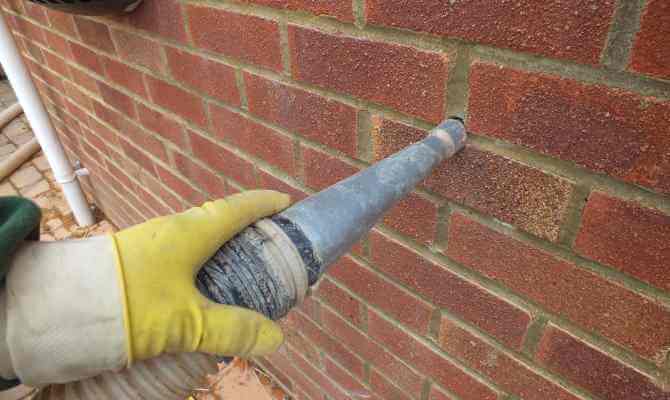Your house probably has cavity walls if it was built after the 1920s. These cavities will likely be empty unless the structure was constructed within the last 20 years. Then adding wall insulation can be a very cost-effective method of retaining heat in your home and saving on energy costs.
Cavity insulation can save you as much as £160 a year in heating costs by reducing the amount of heat that escapes through the cavity insulation walls of most homes. According to figures from the Energy Saving Trust website, cavity wall insulation could pay for itself within less than five years.
According to these figures, gas-heated homes in England, Scotland, and Wales are projected to be more energy-efficient than non-insulated homes. Since the amount saved each month varies between winter and summer, the actual payback time will depend on when the insulation was installed. The installation costs shown here are not subsidized.
What Are Cavity Walls?
There is a gap (or cavity) between two thin walls (usually built of brick) that are often referred to as ‘skins’ or ‘leaves.’ The walls are usually tied together with metal wall ties.
Find Out If Your Walls Have Cavities
The first clue to this is the age of your house. For those not sure of the age of the wall or those who believe it may have been built in the 1930s, check any exposed brickwork. The bricks will all be the same size when your home has cavity walls.
You may be able to tell the thickness of the outer walls if the brickwork in your home has been rendered or clad so that you cannot see any bricks. Look at the windows and doorways. Brick walls thicker than 10 inches are probably cavity walls – solid stone walls can also be very thick.
Find Out If You Have Cavity Wall Insulation In Your House
The walls of your home were likely insulated when it was built in the last 20 years. If they weren’t, you could inspect them by:
- Having a registered installer drill a small hole in the wall will let you know whether the wall is empty or insulated. The borescope is used to determine this.
- Contact your local authority’s building department for more information. You should be able to find records if the walls have already been insulated.
Additionally, there are a couple of clues to look out for that could save you the trouble of a borescope inspection:
- The installers will have drilled 1-inch-diameter holes every three to four inches when the wall cavity insulation is installed. There will still be faint marks even though they’ve filled these in – and you should not confuse them with damp proof course injection marks.
- There may be leaks in the cavity insulation at the top of your walls—Checkin your attic. You don’t want this to happen! It is probably best to get a professional to clean it up and seal off the wall if you see this.
Can You Insulate Your Home Without Brick Walls?
Stone walls are likely solid with no cavities to insulate, so they’re suitable for insulating. We have alternative ideas for solid wall insulation in our ultimate guide.
The cavity walls of timber frame buildings or pre-fabricated concrete houses will not be available to you – but there are other ways to insulate them. Get in touch with the National Insulation Association for a list of suitable local installers.
Don’t let a contractor inject insulation into the space between the outer brick leaf and the inner frame of your timber-framed home, as this can result in serious damage.
